Abstractly and contextually, lawyerdly tale behind the Jammu and Kashmir goes back to the formation of arbitrary power during post 1947 era, though under impersonation of democracy, wrest in contrary to the canons of the fundamentals of our dreamed republic in a unanimous resolution of the Indian Constituent Assembly on 22nd January 1947.
Ironacally, though the State of Jammu and Kashmir became integral part of India on the auspicious day of 26th October 1947, and that too irrevocably without ifs and buts, but under the ill advice of Lord Mountbatten, the issue of illegal aggression of Pakistan into the territories of Jammu and Kashmir state was taken before the U.N. Security Council, and created chequered situation across the state not only politically but also communally by losing a considerable area of 83,000 square kilometers to Pakistan, the covert involvement of Lord Mount Batten in such whole episode cannot be ruled out especially in the face of sequence of events in the past, forcing Maharaja Hari Singh the Ruler of this State to accede for Pakistan being firm policy of the British to keep situation in the State always boiling and should remain under the weak administration.
The ploy of Article 370 in the constitution of India was though Temporary and transitional in nature, but the ailing provision was never redeemed or brought in consideration of the appropriate Legislature as promised by the mover (Union Minister) N. Gopalaswamy on 17th October 1949 on the floor of the Indian Constituent Assembly. The situation of the State became bad to worse because of the oppressive attitude of Sheikh Mohammad Abdulla and the loose bridled powers dared him even to question the accession of the State of Jammu and Kashmir. Such a seditious act of Sheikh Mohammad Abdullah forced the Government of India to dethrone him from the Prime Ministership of Jammu and Kashmir coupled with his imprisonment on 8th August 1953.
The situation melancholy went on indecisively for over seven decades by creating a patent and opprobrious notions in the minds of some disgruntled elements that the Constitution of Jammu and Kashmir has overriding effect over the provisions of the Constitution, though corrective version of the Apex Court came in case of the State Bank of India v/s Santosh Kumari Gupta ; holding that “the State of Jammu and Kashmir has no vestige of sovereignty outside the Constitution of India and its own Constitution which is subordinate to the Constitution of India” (Judgment dated 16-12-2016 in Civil Appeals No 12237 – 12238 of 2016) (2017) 2 SCC 538.
Even Justice Mehar Chand Mahajan the then Prime Minister of Jammu and Kashmir had written to Sardar Patel the then Home Minister of India, on December 24, 1947, that “This Humble Subject who promised steadfast loyalty, now wants to prosecute His Highness (Maharaja Hari Singh) before the people’s tribunal and demands his abdication. His (Sheikh Abdulla) latest offer is that His Highness can have the District of Jammu, kathua, udhampur and have to leave the rest of the territory to a Muslim republic like Pakistan. He is actively canvassing support of Muslim Conference leader Abbas who is in Jail and with whom he is having interview” (V. Shankar [ed] selected correspondence of Sardar Patel; 1945-50. Vol I, Ahmedabad Navajivan Publishing House 1977 Page 283).
Dr Syama Prasad Mukherjee had demanded on the floor of Lok Sabha on 7th August 1952, (Parliamentary Debates, Motion ref-Kashmir State Vol 4 Part II August 7, 1952 Page 5885-5899) “Let me make it clear that I am proceeding on the basis of the well of the people to come to India, either whole or in part. If these two provinces, Ladakh and Jammu, say that they will come to India with all these subjects, make it possible for them to do so.
Although all Members of the Lok Sabha supported on the floor of Lok Sabha from Jammu and Kashmir besides other MPs hailing from other states supported the Bill so moved by Sh. Satvir Shastri in 1965, but the then Home Minister despite made assurances to take steps for abrogation of Article 370, the matter remained under carpeted for no good reason. Similarly the bill moved by Late Atal Bihari Vajpayee Ji also in 1971, though defeated in the game plan of the Government of India but awakening among the Legislatures across the country with counterproductive results in the face of subsistence of Article 370 had deep rooted emerged.
Smacking fishy in the mind of Sheikh Mohammad Abdullah, by the Buddhist of Ladakh even well before transfer of power took place on 5th March 1948, they submitted their memorial to the Maharaja, Hari Singh Ji through their Members of Praja Sabha with copy to Pandit Nehru, with their submission that they are not expected to get a fair deal with the transfer of power to Sheikh and suggested that either the Ladakh region may be kept under direct control of Maharaja ; or the Ladakh be brought under direct control of Central Government, or the same be merged with the then subsisting Punjab province the same thing was again reiterated through memorandum of Sh. Chhewang Rigzim, the President of Buddhist Association Ladakh on behalf of the people of Ladakh so submitted to the Prime Minister of India dated 4th May 1949.
As also published in Organizer of May, 19th 1952, ladakh’s Head Lama Kaushak Bakula Member of the Jammu and Kashmir Constituent Assembly talked about the negligence and partiality of Sheikh Abdullah Government. He said in the Constituent Assembly of Jammu and Kashmir on the negligence and partiality of Sheikh Abdullah Government, more specifically that “It seemed that in the budget framers’ minds, Ladakh did not exist as a part of Jammu and Kashmir State” while complaining that out of over Rupees 4.5 crore, only Rupees 9 lakh would be spent on Ladakh. This apart he also strongly criticized the introduction of Uru as a medium of instruction in Ladakh, which according to Kaushak Bakula was foreign to them and was the greatest hurdle in the progress of education in Ladakh. Even another Member of the Constituent Assembly from Ladakh Maulvi Ibrahim, described the conditions of the people there as miserable by complaining that no progress had been made in the budget for them.
According to Jagan Nath Sahu (in his work “Red Menace in Kashmir, Delhi, Kashmir Democratic Union at page 3) has spelled out that “The year 1947, materially altered the complexion of things in Kashmir. Soon after coming to power, the first nationalist Government of Kashmir, headed by Sheikh Abdullah, let loose a regin of terror in the Valley and embarked upon a campaign of merciless suppression of democrats and freedom lovers in the State. The communists who had been anxiously waiting for an opportunity like this did not fail to avail of it to their best advantage. In accordance with their policy on infiltration, they put into full operation their plan of capturing the National Conference and through the State administration. They were successful in securing some of the most important posts in the higher strata of the administration. Khwaja Ghulam Mohammad Sadiq, a noted communist of Kashmir, became the Development Minister of the State. The Reds got some of the key posts in the Kashmir Civil Secretariat as well Mr. B.P.L Bedi, then a prominent Communist leader of India, became the Head of the Counter-Propaganda Department of the State. His wife, Freda got a seat on the State text Book Committee which prescribed curricula for state educational institutions and which got books prepared and published for students upto the matriculation standard in Government Schools.
According to B.N. malik (in his book My years with Nehru, Kashmir, New Delhi Allied Publishers, 1971, Page 25), Sheikh Abdulla said “Kashmir’s accession to India will have to be of restricted nature” and described arguments in favor of full application of the India Constitution of Kashmir as unrealistic, childish, savoring of lunacy”. In another speech two weeks later, he said, “It would be better to sie than submit to the taunt that India was our bread giver. Kashmir is not eager for India’s aid”.
In the same book at Page 101-02, B.N. Malik had narrated that, Sheikh Abdullah returned to Kashmir from Bombay in the middle of May 1946. He immediately started a campaign of Vilification of the royal family in Srinagar. He and many his followers delivered highly objectionable speeches in which people were incited to destroy the existing Government, to repudiate allegiance to Maharaja and force him to quit Kashmir. Unmentionable abuse was heaped upon the person of the Maharaja and the ruling family. This marked the start of the agitation known as the “Quit Kashmir” movement. Mr. B.N. Malik further writes that “Then suddenly to our ulter surprise Pandit Nehdru started talking bitterly against Sheikh Abdullah’s communalism. He traced Sheikh’s history from 1930, onward and mentioned how he had started his career with Muslim Conference which was an out and out communal organization. He said that as a result of pressure from outside and seeing the development of the state;’s peoples movement in the rest of India and for purely tactical reasona dn probably under the advice of his liberqal followers, the Sheikh had convered the Muslim conference into political conference to give a non-communal appearance. At this time Pandit Nehru suddenly looked at me and enquired whether I had not come across some information about the possible British connivance in the movement. I replied in affirmatice. He (Nehru) continued his talk against the Sheikh and mentioned all his communal activities throughout the period, he had acted as the national Conference leader. It was the Pakistani aggression which had mellowed him a little for qa short time, because the tribals had committed gruesome atrocities on the Muslim’s population in alley. But as soon as he became the Prime Minister, he came out in his true colors once again and started his anti-Hindi activities. In contrast he (Nehru) praised Bakshi and Sadiq for their completely non communal outlook and said these two were really secular minded persons who required all supports from India. Pandit Nehru said that all trouble in Kashmir was due to Sheikh’s communal outlook and it was he who was not allowing the state to settle down to peace and stability.
The Sheikh always talked about the rights of the Muslims forgetting that the Hindus also formed thirty five percent of the population of the state and he never showed any consideration for them. Pandit Nehru mentioned that politically he and other Indian leaders had to go along with the Sheikh for a considerable period and they had also helped him and played him up hoping that by coming in contact with secular India, where Muslims and Hindus and persons of all denominations were living together and enjoying a peaceful life. Sheikh Abdullah would be able to get rid of his communalism, but communalism was a disease with him and he could never get rid of and his entire outlook and behaviour were based on the fact that Kashmir valley had a Muslim majority. Therefore, he was not at all surprised that Sheikh Abdullah had conspired with Pakistan to overthrow the non-communal and secular Government of Bakshi and ASadiq. What Pandit Nehru was factually correct and was similar to what Sardar Patel had stressed to me in 1949.”
All what is place here in before narrate the true character of Sheikh Mohammad Abdullah the architect of controversial provisions of Article 370 being got incorporated in the Constitution of India, despite all well in the knowledge of the tall leaders of Indian Republic including Pandit Nehru more specifically as narrated by a close associate of Pandit Nehru, Mr. B.N. Malik, well placed in this Book, My years with Nehru.
The experiment of Pandit Nehru, in providing provisions of Article 370 in the Constitution of India, despite dissensions of Sardar Patel and Bhim Rao Ambedkar, the then Home and Law Minister of India respectively, did not bring any fruits except for growing thorns in the journey of India Republic in shape of multifaceted problems and controversies.
One of the strongest roots of Kashmiri Separatism and alienation lies in Article 370 of the Constitution of India. It is an issue which involves not only historical, constitutional, political, social and economic consideration of far reaching consequences, but also psychological and emotional one. Even Jag Mohan in his diary had mentioned in August 1986 that “Article 370 is nothing but a feeding ground for the parasites at the heart of paradise. It skins the poor. It deceives them with its mirage. It lives pockets of the ‘poor elites’. It fans the ego of the new ‘Sultans’. In essence, it creates a land without justice, a land full of cruelties and contradictions. It props up politics of deception, duplicity and demagogy. It breeds the microbes of subversion. It keeps alive the unwholesome legacy of the two nation theory. It suffocates the very idea of India and fog the very vision of a great social and cultural crucible from Kashmir to Kanyakumari. It could be an epicenter of a violent earthquake in the valley- an earthquake, the tremors of which would be felt all over the country with unforeseen consequences”.
For a long duration of seven decades Article 370 had become an instrument in the hands of the ruling elite to exploit the people; vested interests in bureaucracy to amass wealth by corruption and other wealthy elite to evade wealth tax, Urban land Ceiling Act and Gift tax in absence of healthy legislations through State Legislature, otherwise a common-man had remained the most suffered.
Aftermath of the Kashmir Accord of 1975 entailed with the State Assembly elections of 1977, the process of full integration of the State with the Union of India came to a grinding halt. Even a Cabinet Committee was constituted to review the central laws so extended in this state. A bogy of autonomy was raised and a controversial Jammu and Kashmir Grant of Permit for Resettlement Act 1982 was passed by the State Legislature by camouflaging under Article 370, to appease the Muslim majority despite opposition for the public at large from the State.
Dynastic rule was the align issue in Kashmir politics. On August 21, 1981, Sheikh Mohammadan Abdullah in his speech deliver in Iqbal park announced his handing over the Presidentship of National Conference to his son Farooq Abdullah by quoting the instance of Indian National Congress in 1930, when Moti Lal Nehru had entrusted the Presidentship of Congress party to his son Jawahar Lal Nehru besides quoted Kashmir as a nation’s besides Mirza Afzal beg the second senior most leader of National Conference and Ghulam Mohammad Shah, the son in law of Sheikh Abdullah were sidelined. Ghulam Mohammad Shah as close associate of Sheikh Abdullah. Since 1930 and remained in Jail along with Sheikh Abdullah was shown the door by seeking his resignation for the sake of the coronation of Sheikh Abdullah.
Later after the demise of Sheikh Abdullah on 8th September 1982, the Senior Leader and Son-in-Law of Sheikh Abdullah was also shown the door by the coronation of Farooq Abduallh as Chief Minister of the State on 8th September 1982. Such coronation became the root cause of family war of Abdullah’s e.g. Farooq Abdullah and G.M. Shah.
In 1983, a chain of incidents witnessed the rude repression like disturbance during Prime Minister Smt. Indira Gandhi’s meeting on June 3 defiance of the Election Commission of India’s directions and deployment of State force in election duty by Keeping Central forces idle though deployed for the purpose, during 1983 State Assembly elections, booth capturing and riggings etc, deplorable acts of subversion during one day international cricket match at Srinagar on October 13th, 1983, murder of India diplomat rabinder Mharte by J&K Liberation Army (a Plebiscite Front) in February 1984, rampage and setting of fire a number of Shops, Arya Samaj School, Nirankari Bhawan, Hanuman Temple and throwing idole in Jhelam on June 7, 1983, and incident of kinds take place from August 15, 1983 to July 2nd 1984. Bitterness between Farooq Abdullah and G.M. Shah led N.C. factions, revolt against Farooq Abdulla within National Conference, toppling his Government by G.M. Shah and by succeeding him on July 2, 1984;
Rajiv Farooq Accord and transformation of the State Assembly elections into a political cauldron, bubbling over with party dissidence, rabid religious fundamentalism, secular blandishments, secessionist appeals. Rigging of elections and caging the leaders during 1987 Assembly elections, brought out the steeped up insurgency momentum, in the event of strangulation of democracy. Wide rift between MUF and National Conference faction, gave rise to Syed Salaluddin and formation of Jammu and Kashmir Liberation Front. All that is the outcome of Farooq led National Conference-Congress Government.
Chain of incidents like bomb explosions in July 1988, at Srinagar telephone exchange and golf course (being start of armed insurgency), bomb blast at Hari Singh High Street Claiming first Kashmiri Pandit’s first causality (Parbawati of Chandoora), murer of Tika Lal taploo in Srinagar on September 14, 1989. 50 bomb explosions during October 1989, Murder of N.K. Ganjoo Session Judge on November 4, 1989, 50 explosions during November 1989, and observance of 14th November 1989 as black day, chain of incidents with respect to inter party and intraparty quarrels from 1984-1989, The conduct of Lok Sabha Members Mohammad Shaffi Butt and Saifuddin Soz going, prejudicial to national interests, assassination of SHO Maisunna Bazar (Saidulla) on December 1989, Dr. Rubaiya’s Kidnapping on December 8, 1989, the incidents of subversive activities even during curfew hours and increased frequency of terror incidents since January 1990 were the instances of grave concern, inviting the circumstances for dismissal of Farooq led National Conference and Congress Coalition Government on 18th January 1990 by imposition of Governor’s rule in the state of Jammu and Kashmir which remained till 9th October 1996.
The General cries of the terrorist Groups were being witnessed as “Yahan Kya Chalega-Nizam-e-Mustafa ; La Sharkiya, La garbiya-Islamia Islamiya ; Allh Ki Rehmat Kar Saya – Towhid Ka parcham Lahraya ; Ay Marde-Mujahid Jag Zara Ab-Waqt- e – Shahadat hai Aya; Ay gasiboo, Ay Zaalimo Kashmir hamara Chhod do ; Zalzala Aaya hai Kufr Ke Maidan mein.”
42 terrorist organizations as on January 19, 1990 namely ; J&K Liberation Front; Hizab-ul- Majahedeen; Allah Tigers; Zia Tigers;’ Islamic Jamait Tulba; Dukhtram-e- Milat (Women Wing); Al Badar; Operation Balakote ; Kashmir Freedom Army Guerilla Commando; Student Liberation Front; Al-Lhomeni, Hizbi Islami, Hizbullah; Kashmir Freedom Movement; Kashmir Liberation Front; J&K Liberation Organization; Peoples League; Islamic Students League; Al-Mehmoodi Mijahdin; Inqullabi Council; J&K Mahaji Azadi; Victory Commando Force; Islamic Jamurie Kashmir, J&K Inquilabi front; Kashmir Students Force, People’s Liberation Organisation; Tahrike-Jahad; All J&K Soldiers Field Front ; Hizab-Ullah-Islamic-Jammohuria J&K; Free Army; Ikhwan-ul-Musalmeen; Kashmir Liberation Tiger; Peoples Front; Hiz-ul-Zaheed ; National Muslim United Front; Al Hamzah; Ansor-ul-Islam; Muslim Student Front; Tehriquye Azadi; Jinnah Liberation Tiger; Kashmir Freedom KLF Wing; K.V.C. T.F. and Al Qarblaie Group had become operative in the Kashmir valley.
This apart some pro-Pak political outfits also gave rise in valley prominently known as Political Conference headed by Ghulam Mohi-ud0din in 1953, Plebiscite Front lef by Mirza Afzal Geg in 1955, Awami Action Committee led by Mourlvi Farooq in 1964 and J&K National Democratic Front headed by Hashim Qureshi, J&K Mahaz Azadi headed by Mohammad Akbar, J&K Jamal Tulba headed by A.G. Lone in 1977 and Jammu and Kashmir Democratic movement Forum by A.R. Kabli in 1989.
The consequence of the terrorism in Kashmir was Exodus of Kashmiri Pandits from Kashmir valley in 1990, being 31502 families living in Jammu Division and 21,33 families outside the State. Only 1269 families of Kashmiri Pandits are said to have been putting up in Kashmir valley.
All these impelling state of atmosphere prevailing in the State of Jammu and Kashmir forced the Government of India to resort to the bold steps for creating a ground of patriotic mind set across the state and mold the trend of blackmailing and terroprism prevailing under the guise of Article 370 especially when the experiment of BJP-PDP failed and when Mehbooba Mufti openly threatened to be none in Kashmir to shoulder the tricolor, if Article 370.
The Government of India by issuance of Constitution (Application to Jammu and Kashmir) order 2019 (C272) dated 5th August 2019, not only enforced the entire Constitution of India in the state of Jammu and Kashmir but also on 6th August 2019, by an order of the President (C-273) removed all controversial provisions of Article 370. Again by means of the present Jammu and Kashmir Reorganization Act 2019 (34 of 2019) from the appointed day of 31st October 2019, conceded the seven decades long demand of Union Territory status of Ladakh region, but an endeavor has been made to create a sense of Indian patriotism in Jammu and Kashmir temporarily to let the people of Jammu Kashmir regions to understand the reality that the Indian Constitution has the ultimate say beside set the house of this territory in order to let the law to prevail and dynastic rule, rampant corruption and black mail strategies lit prevailed since 1947 is brought to an end.
This book on the subject of the Jammu and Kashmir Reorganization Act, has been brought in public domain with an object to bring the ideas behind all provisions individually and understand the necessities for enactment impelled upon the Government of India with their consequences about to visit constructively for the public good and speeded development of the entire territories of the erstwhile state of Jammu and Kashmir

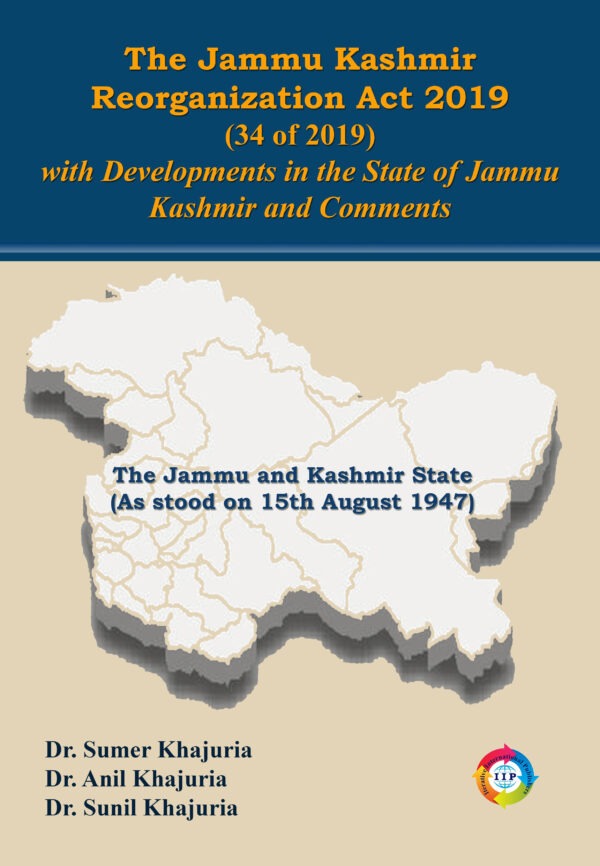
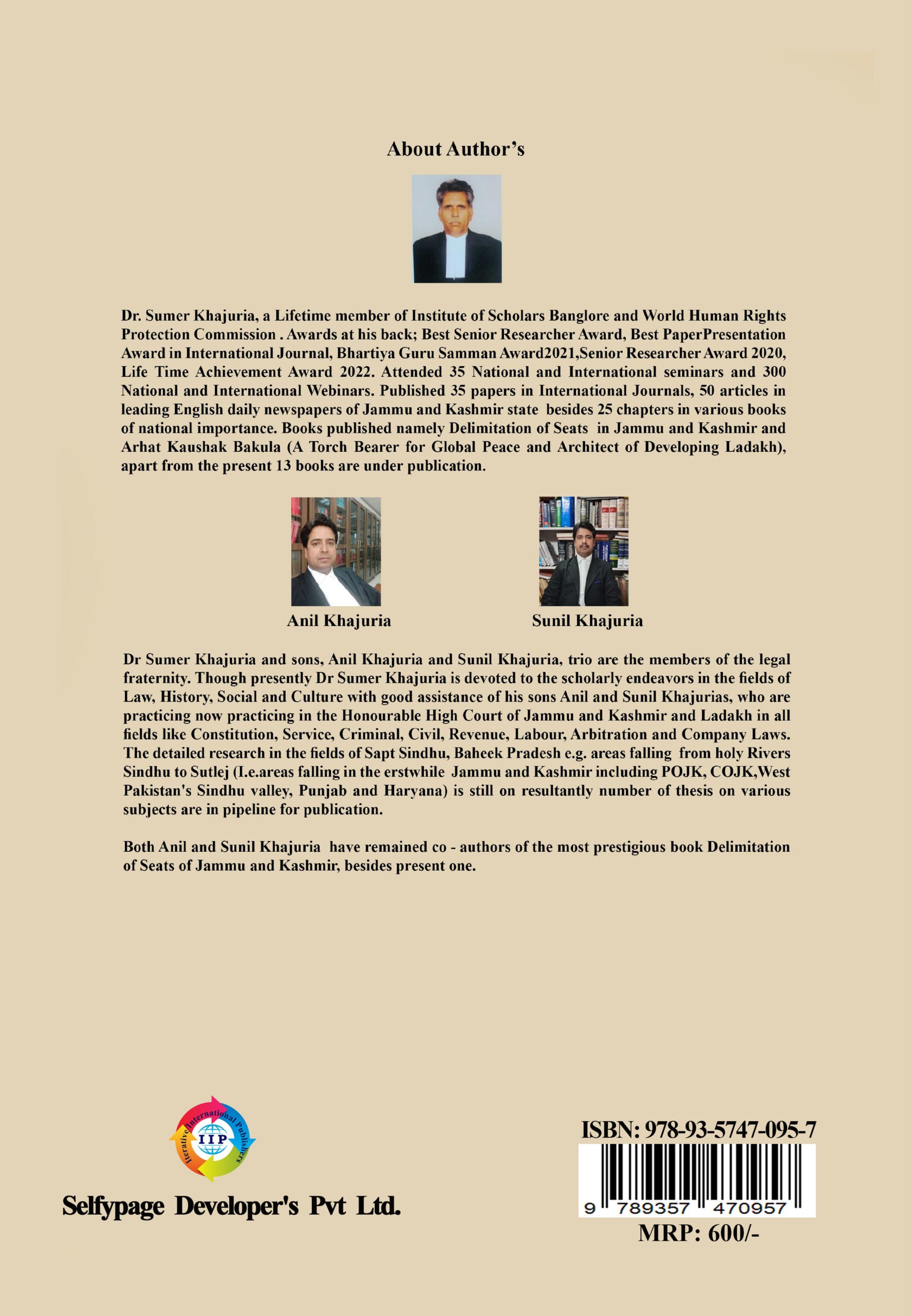
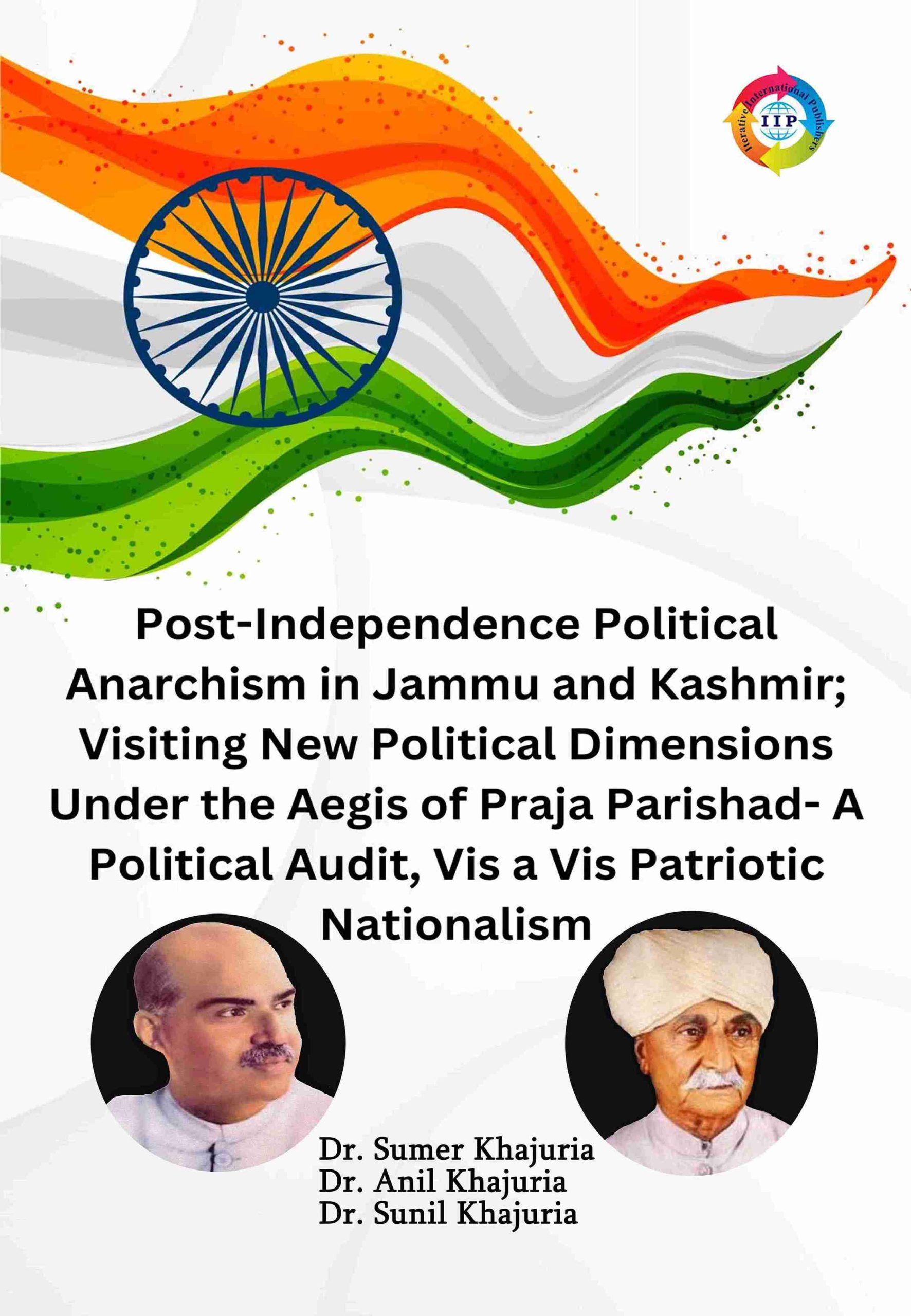
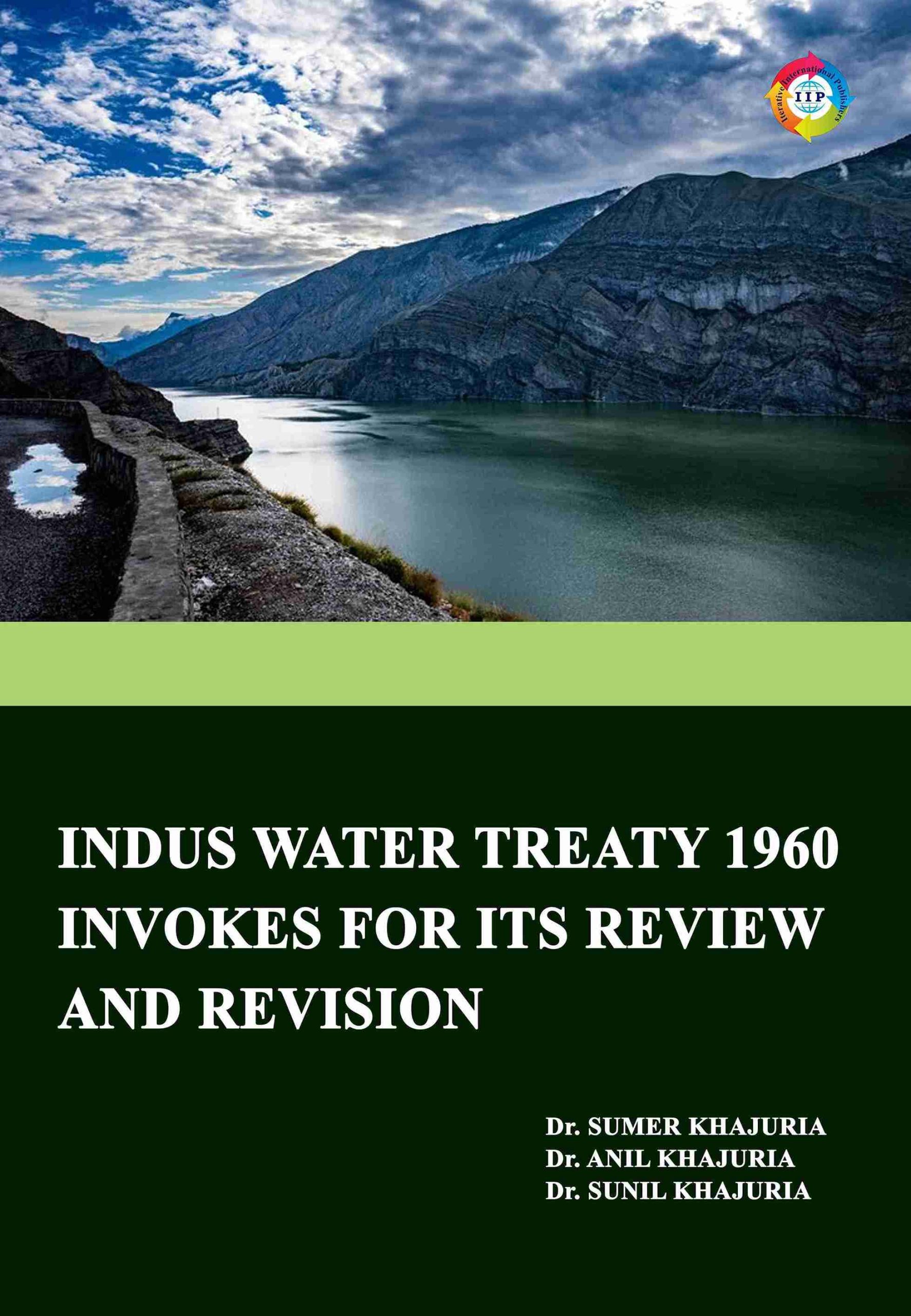
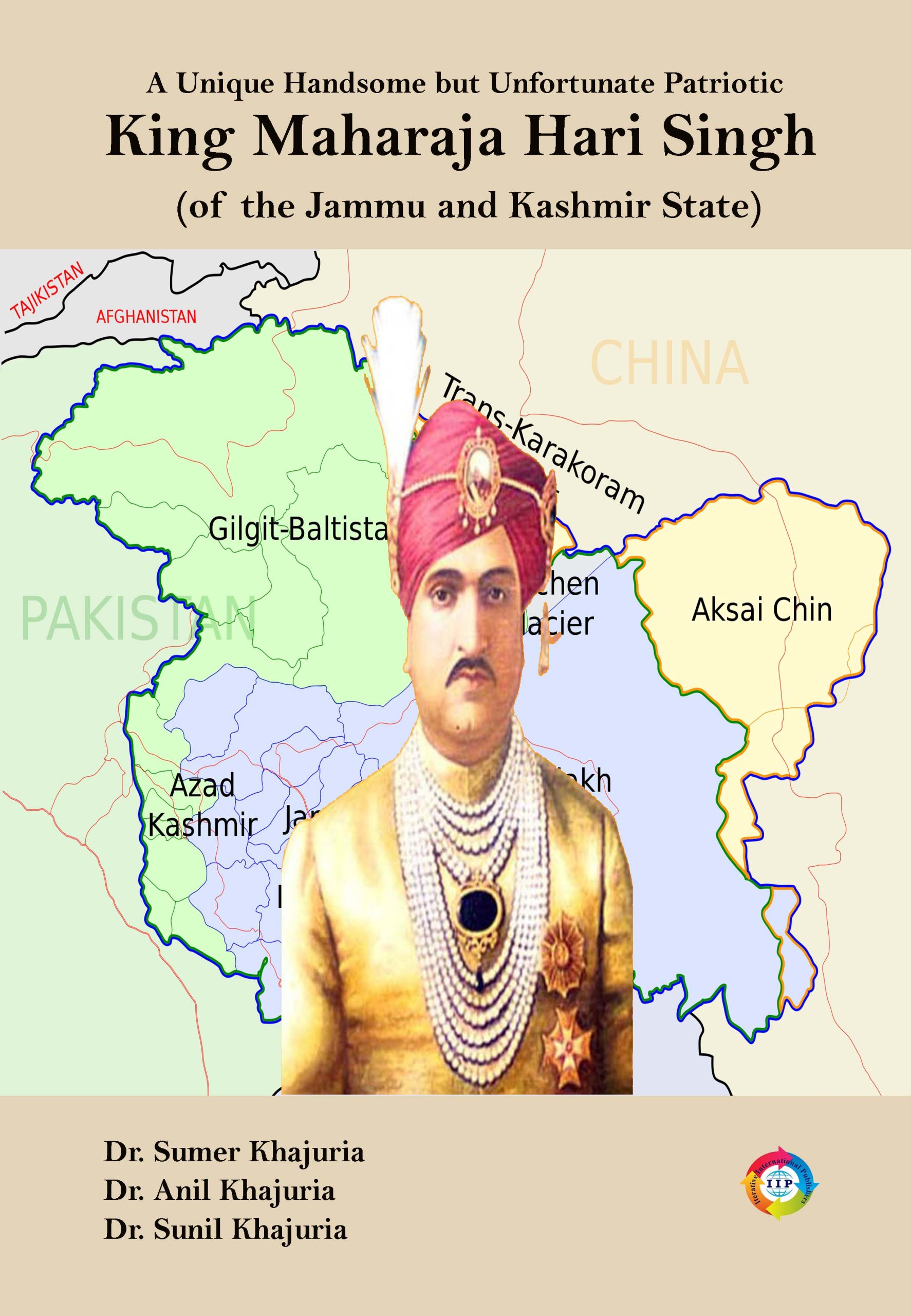
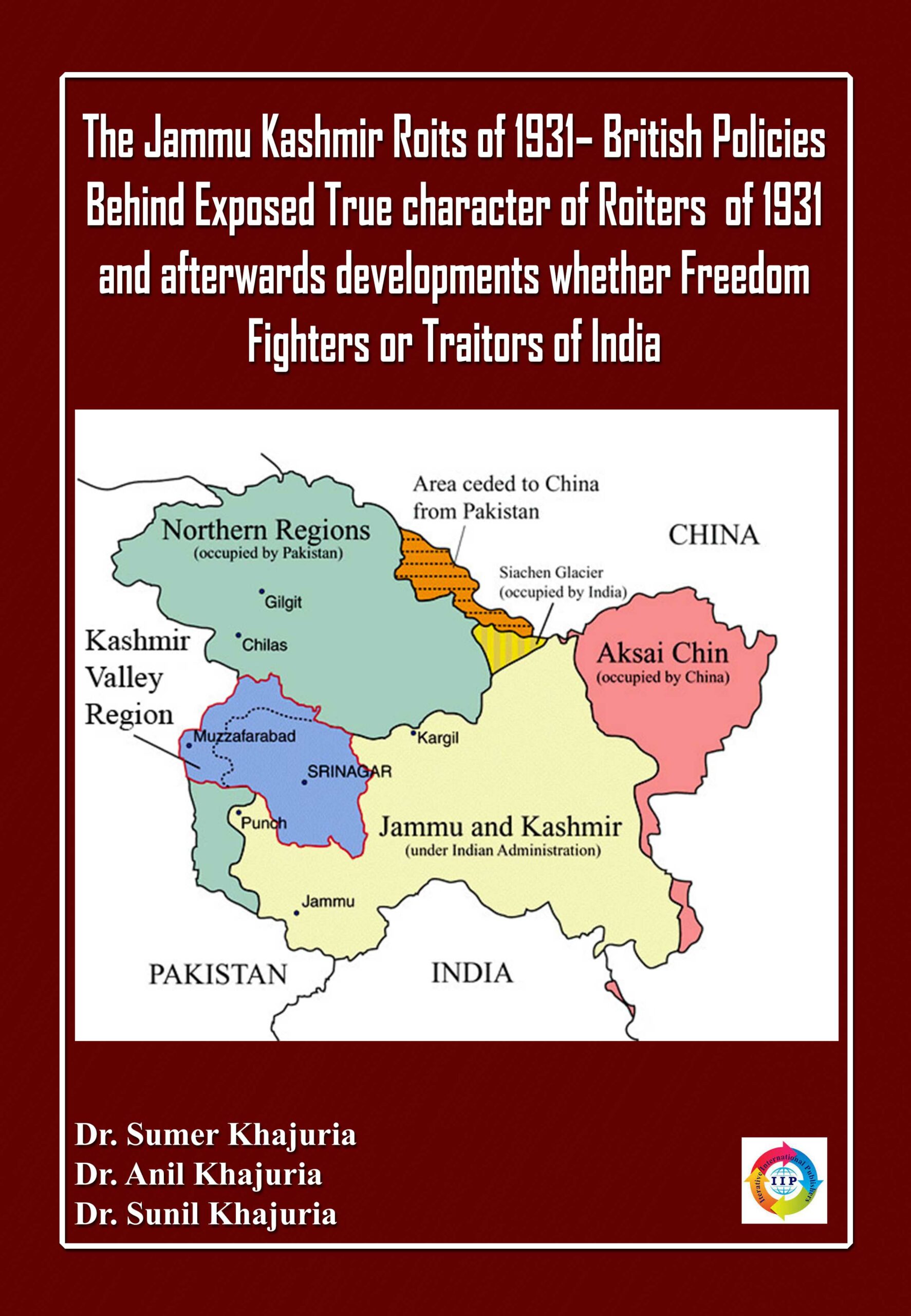
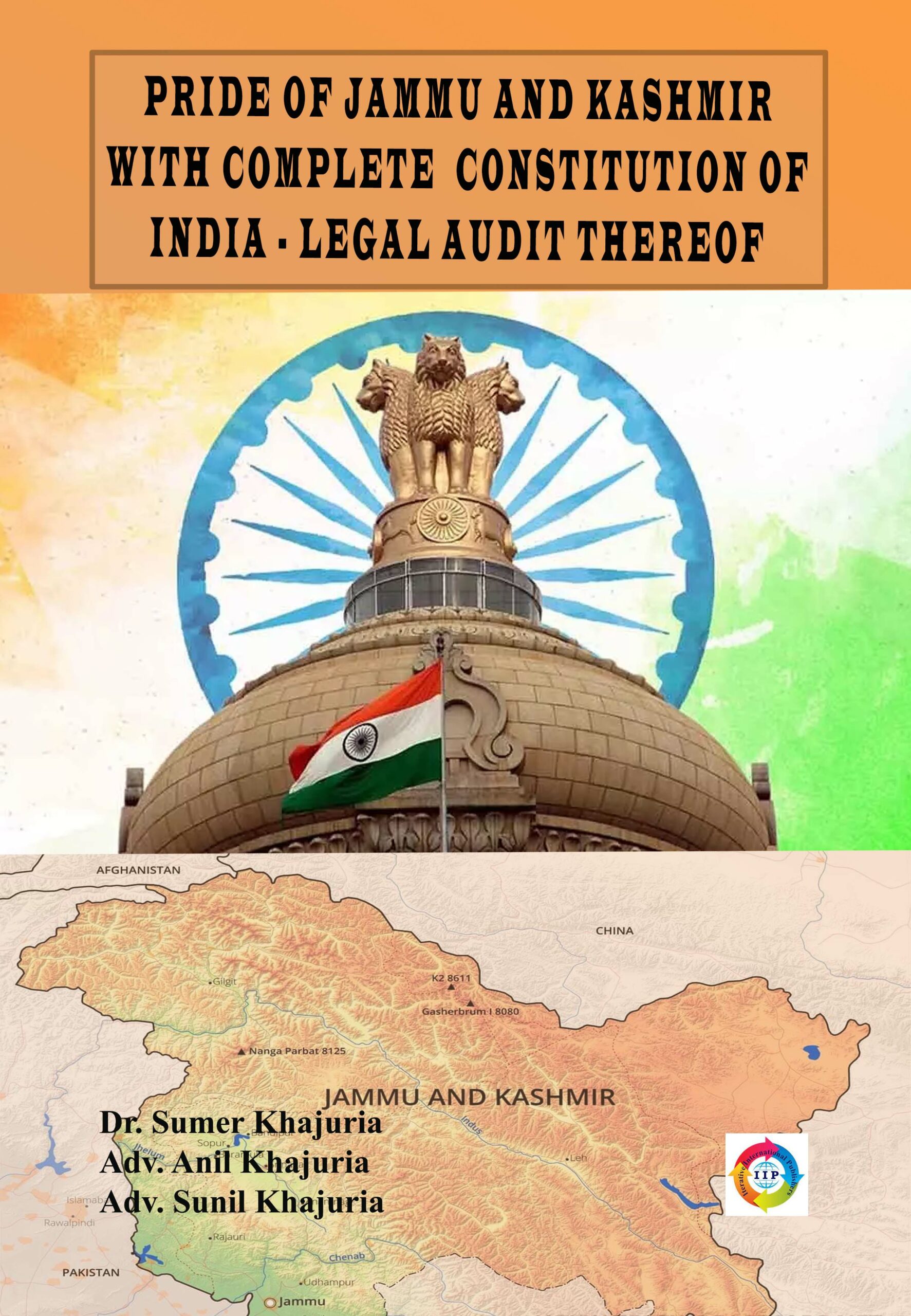
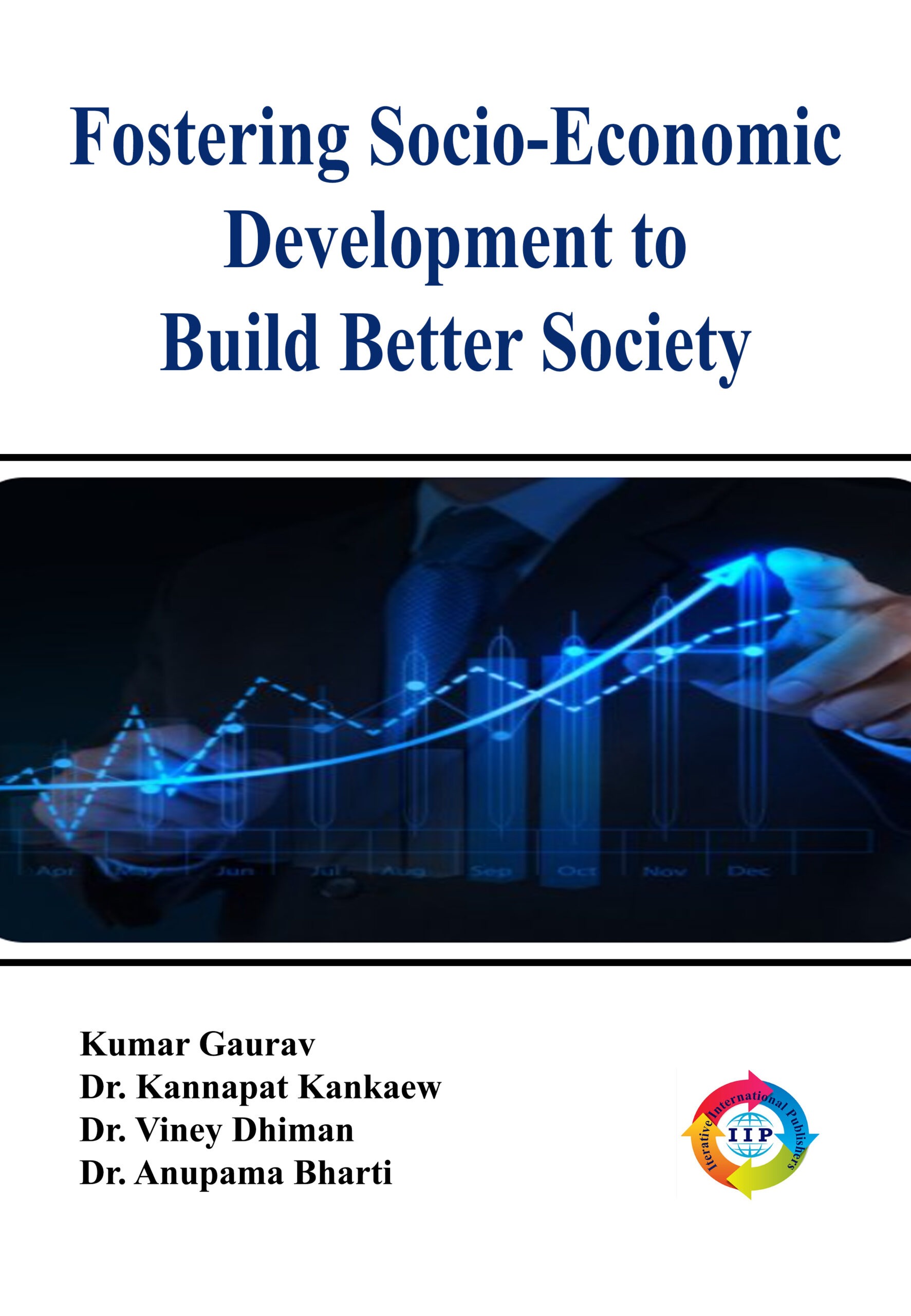
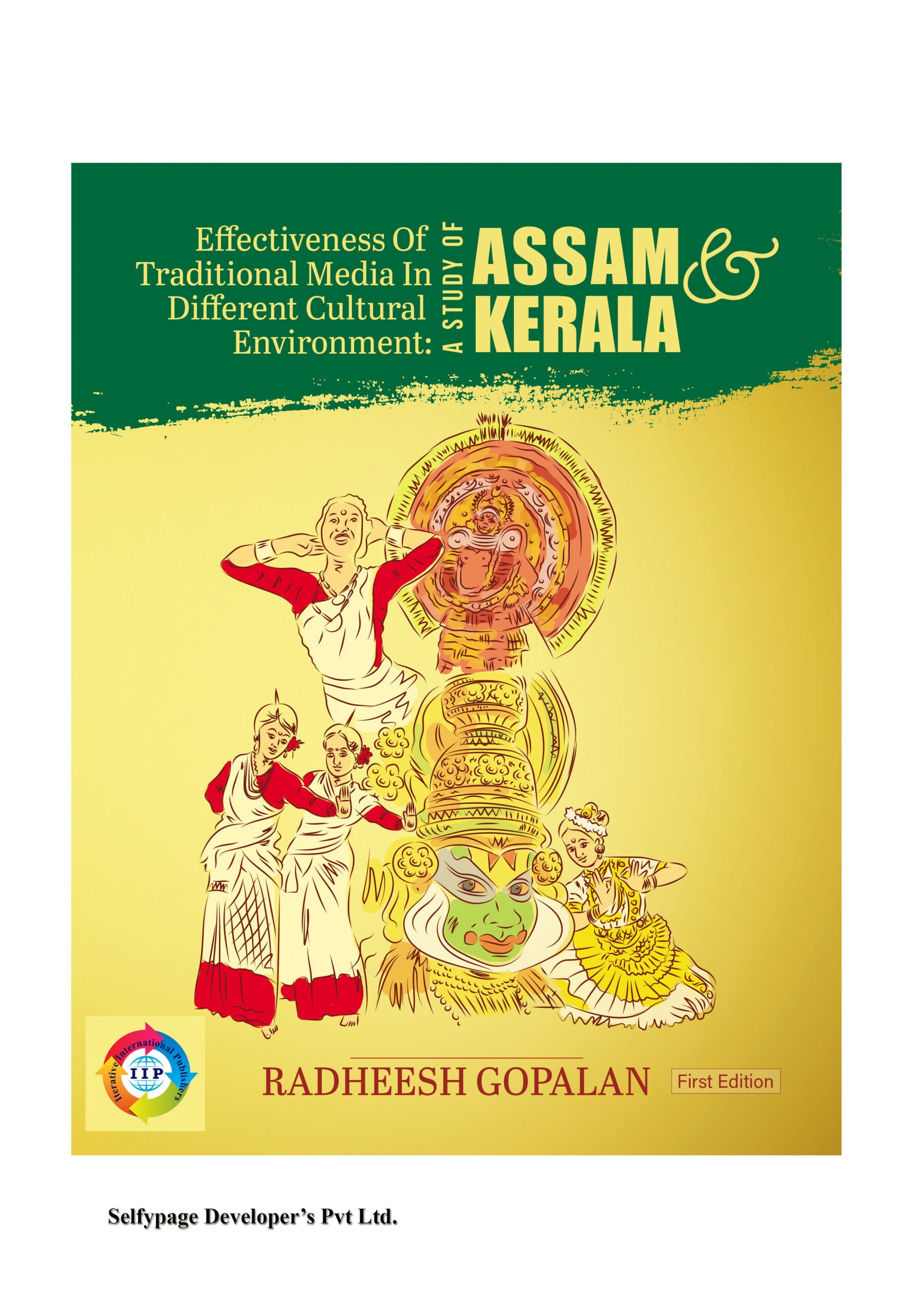
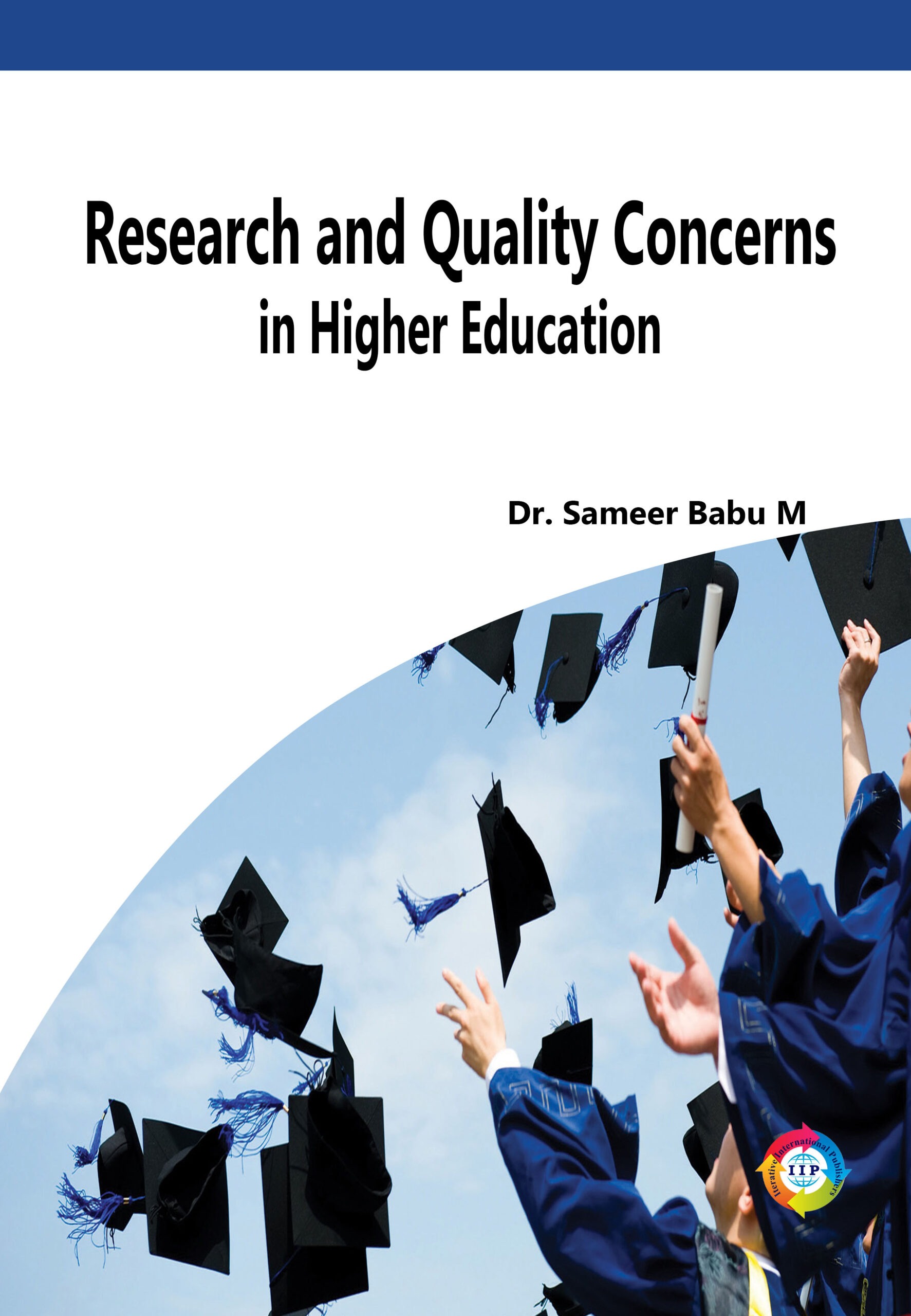
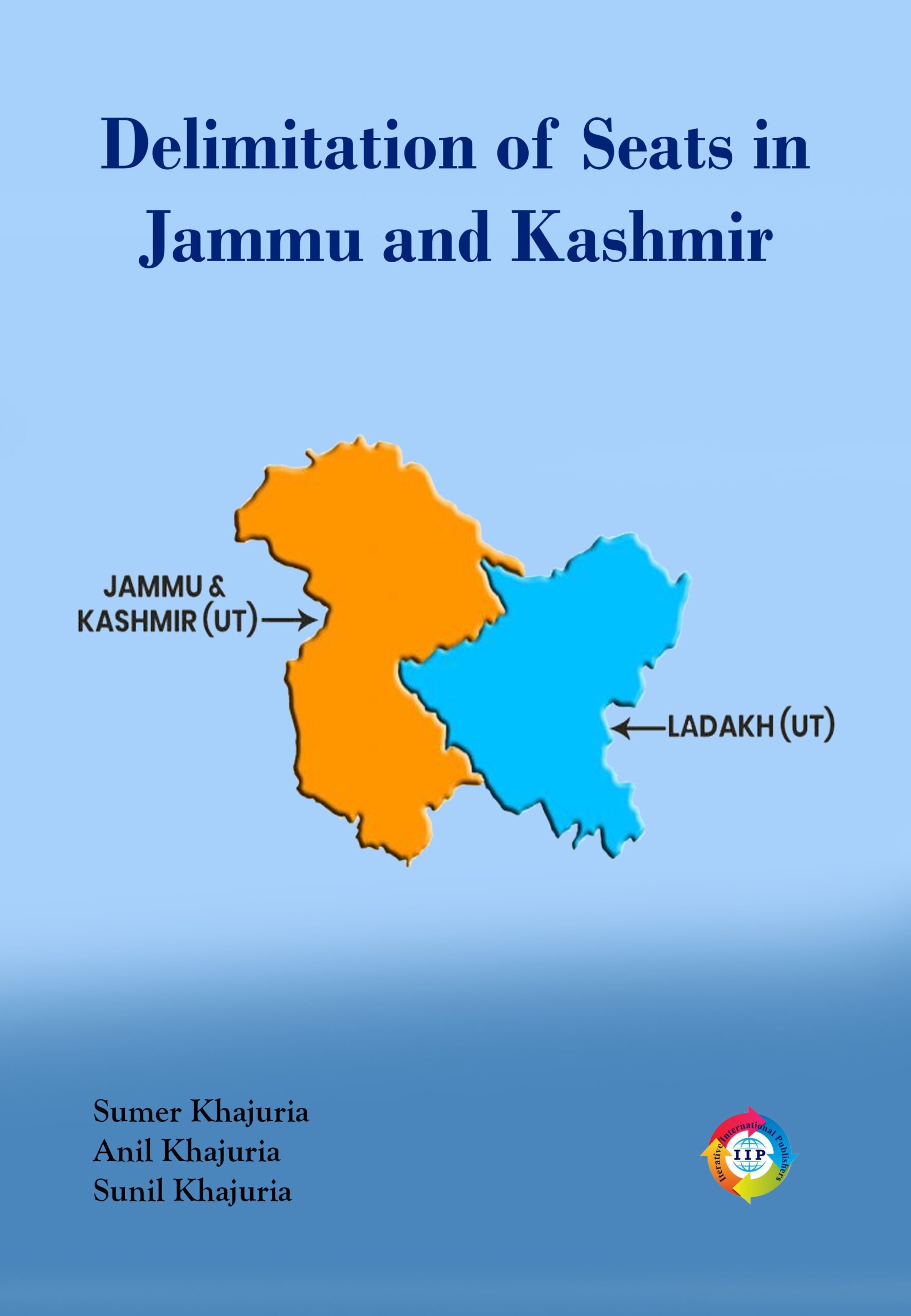
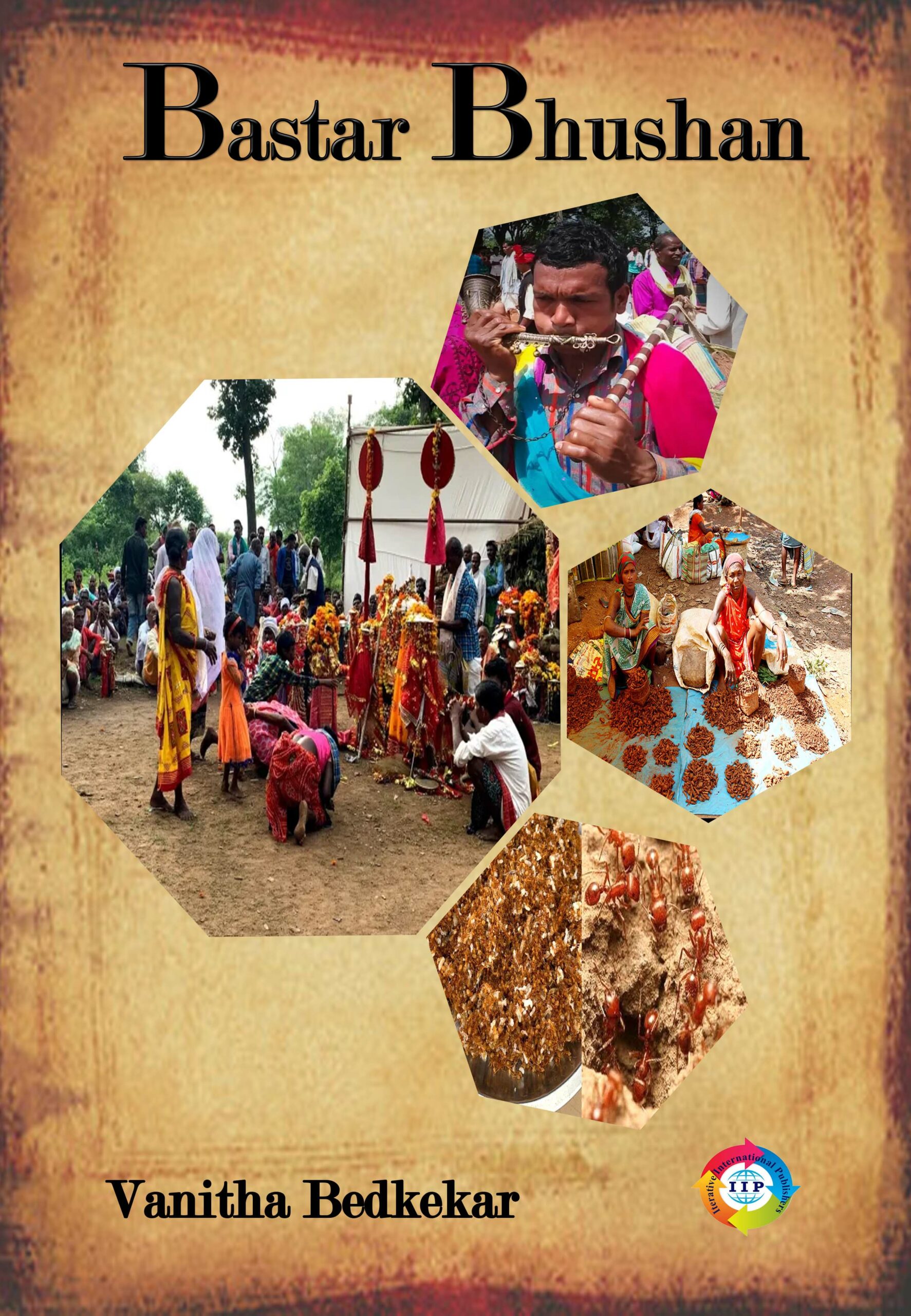
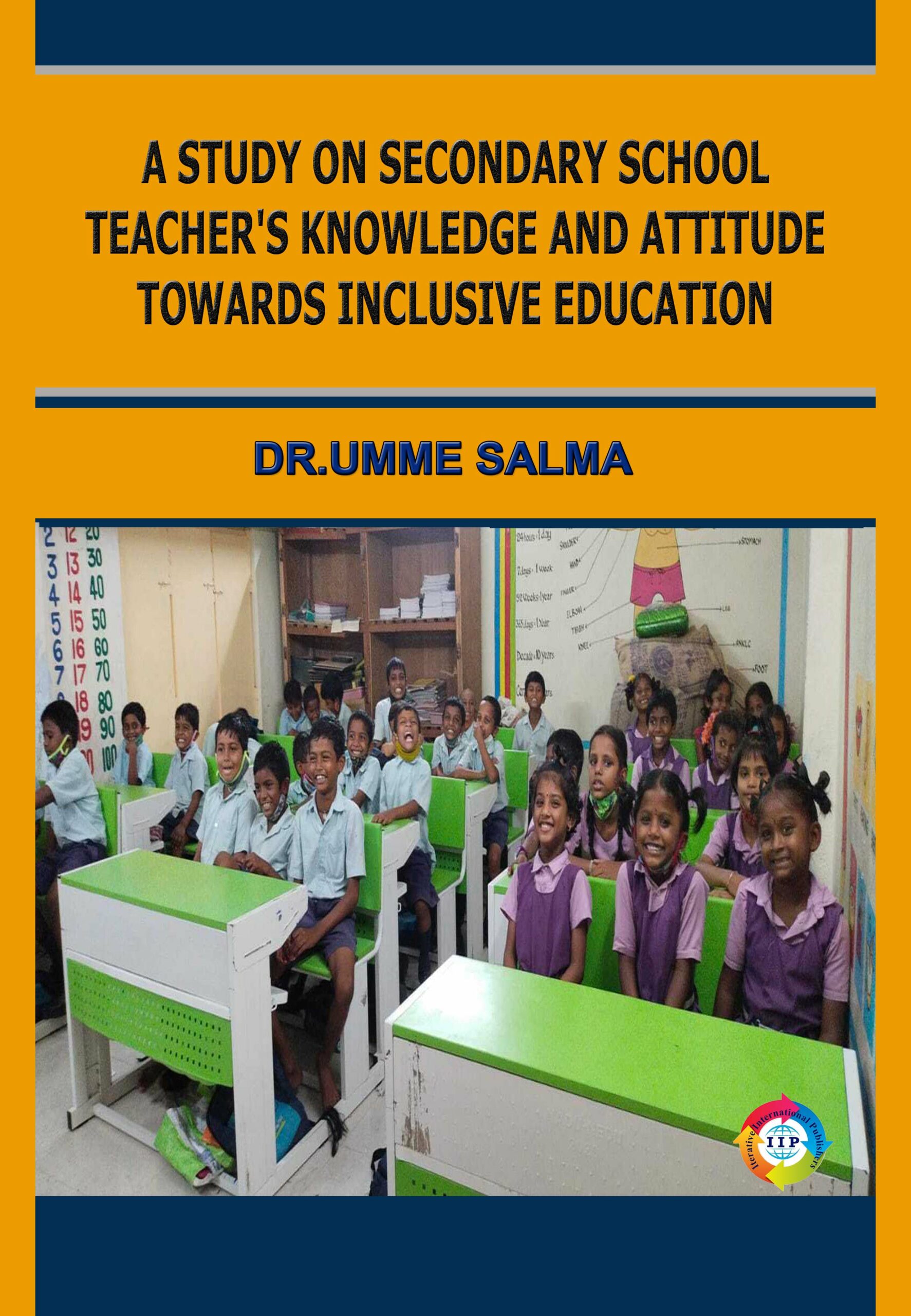
Reviews
There are no reviews yet.